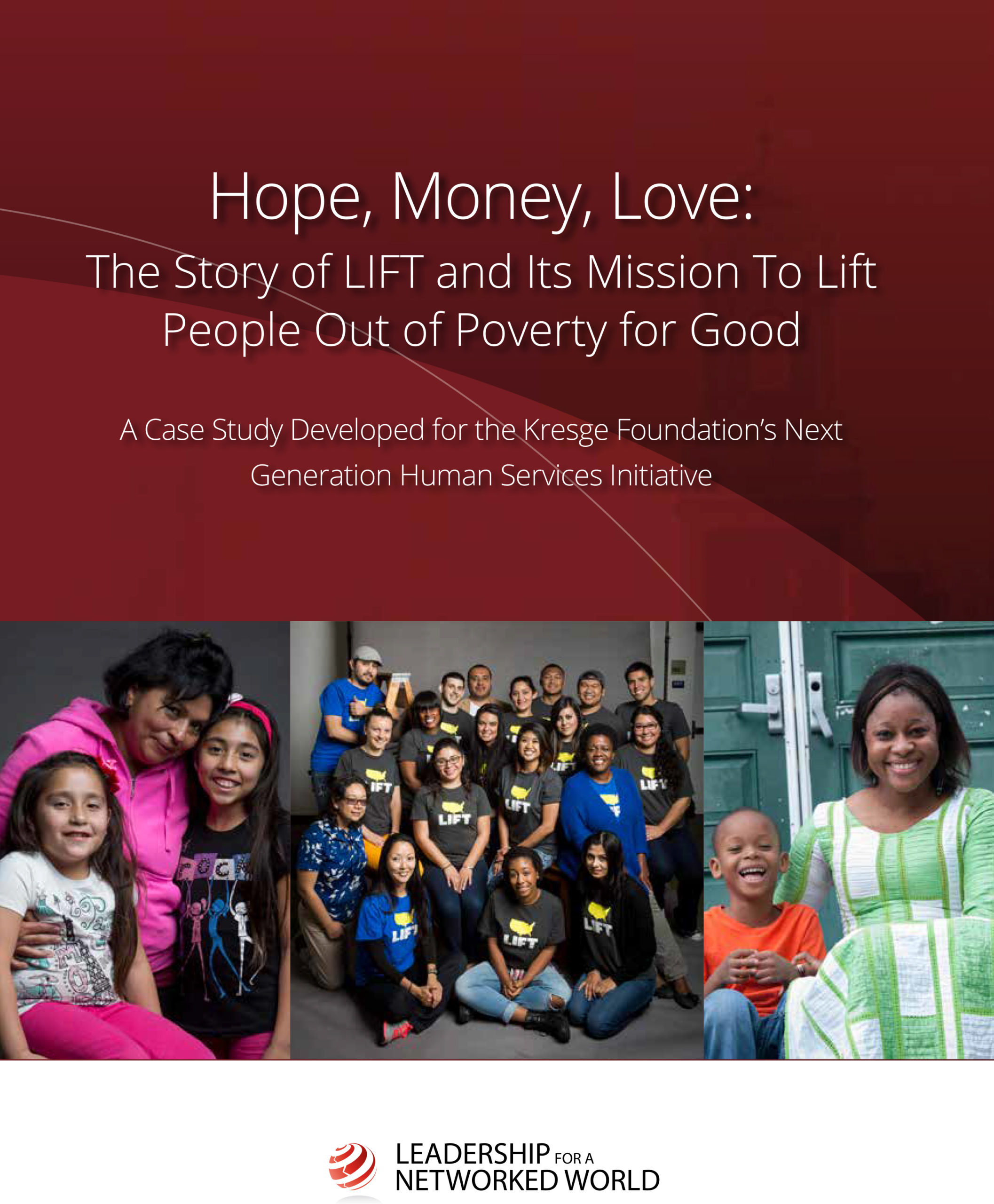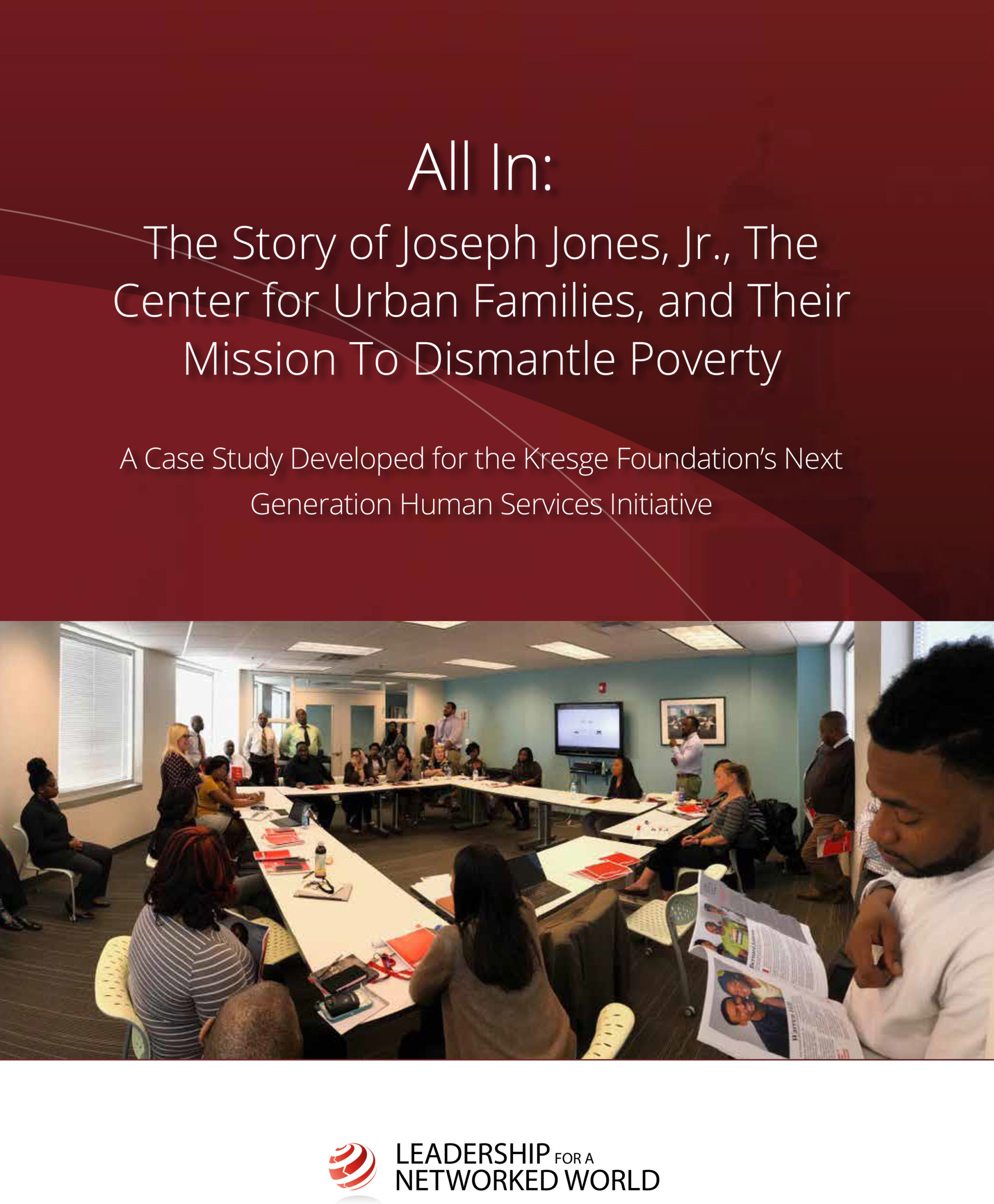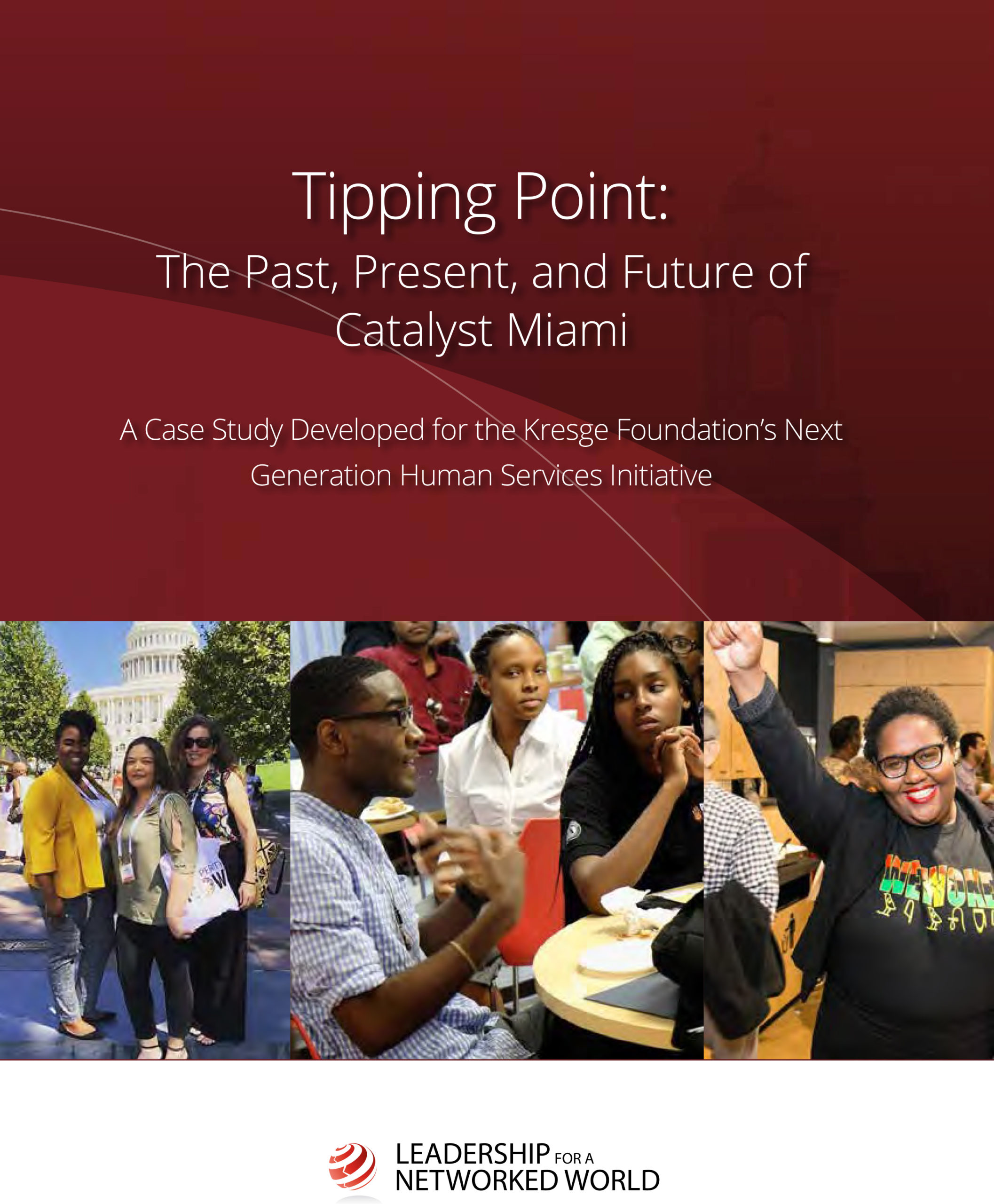Apply New Insights to your Organization
To advance learning on leadership and organizational transformation, the Next Generation of Human Services Initiative developed case studies that exemplify the complex and real-world challenges and opportunities in moving to improved outcomes and impact.
These case studies feature real-world experiences and outline complex and relevant situations that human services innovators will encounter. Our recommendation, is that leaders in the field bring these cases to their organizations, incorporate them into professional development sessions as teaching tools, address the guiding questions that accompany each case with their teams, and use the cases as a reference point to inspire new insights, innovations and best practices for the field.
Initiative Organization Case Studies

LIFT
Late one evening in January 2015, LIFT Founder and CEO Kirsten Lodal had just delivered a speech arguing that the organization was falling short of its mission of lifting people out of poverty permanently. From Lodal’s perspective, LIFT was largely serving as a safety net for people in crisis, helping to make poverty more bearable for the majority of those who walked through its doors. What LIFT needed to be instead was a sustainable springboard out of poverty. Lodal, and LIFT’s new CEO Michelle Rhone-Collins, believed LIFT needed to employ a two-generation approach and narrow its target population specifically to parents with young children to help people exit poverty for good. This would position them to break the cycle of intergenerational poverty at the transmission point.
This critical pivot marked the beginning of a multiyear transformation during which LIFT dramatically revamped its focus on racial equity, two-generation solutions, and building an ecosystem to achieve their vision. Along the way, Lodal, Rhone- Collins, and the leadership team grappled with challenging questions related to redesigning the organizational structures and culture, refining their outcome measures, and realizing a major transformation in value.

Center for Urban Families
Located in the heart of West Baltimore, Center for Urban Families (CFUF) serves an area that is beset with significant poverty, crime, and racial inequity. Founded in 1999 with a mission to “disrupt poverty,” CFUF has served more than 28,000 members, placed 3,779 members in full-time jobs from 2010 through 2016, and touched nearly 62,000 children whose parents were CFUF members. The organization has received national attention for its work, hosting President Barack Obama in 2013. During the visit, the President spoke about his upbringing without a father and lauded the fathers there for working with CFUF to change their lives. “For your sons to see you taking this path,” the President said, “that’s going to make all the difference in the world.”
Yet, the organization is driven to do more and has grappled with challenging questions as it has grown and evolved: What does the organization’s mission of “disrupting poverty” mean as the community’s extraordinary needs evolve? What form of outcomes does the community and its families need to achieve? How could CFUF redesign its governance model and organizational design to increase capacity? What information does CFUF need to evaluate and refine its programs more effectively? How could the organization leverage and expand on its existing corporate and non-profit partnerships? How could the leadership team build internal capacity and create a culture that maximized impact? In a racially charged climate, how could CFUF serve as a unifying force?
Read more about the Center for Urban Families and how they have addressed these key questions here:

Catalyst Miami
Founded in 1995, Catalyst Miami had a multi-pronged strategy to build capacity and resilience and advance social and economic mobility in low-wealth communities in Miami-Dade County. In 2017, in the midst of their strategic planning process, the organization faced a changing landscape and an important pivot point. In October of that year, Hurricane Irma avoided making a direct hit in Miami but triggered extensive evacuations and caused widespread flooding, power outages, and transportation issues that resulted in many people missing work for weeks. Tens of thousands of people living in Miami lined up outside local parks in sweltering heat, hoping to access post-disaster food stamps. This crisis highlighted the threat that climate change posed to Miami-Dade County’s low-wealth communities, the number of people combatting financial insecurity, and the need for an organization like Catalyst Miami.
As the organization was increasing in size and stature, the leadership team was reminded of the depth of the problems that Catalyst Miami was confronting, and the critical importance of seizing the moment to answer a set of challenging questions about their future. Among them: How should the organization structure partnerships and reinforce networks with other stakeholders to advance its goals? What changes needed to be made to the organizational culture and evaluation efforts? What should Catalyst Miami do to promote racial equity? How should the organization reinforce its existing efforts to help the community build resilience given the threat of climate change, reflected in part by increasingly severe storms like Hurricane Irma? Most fundamentally, how could the organization help low-wealth Miamians prepare for future storms, literally and figuratively?
Read more about Catalyst Miami, their challenges and successes here: